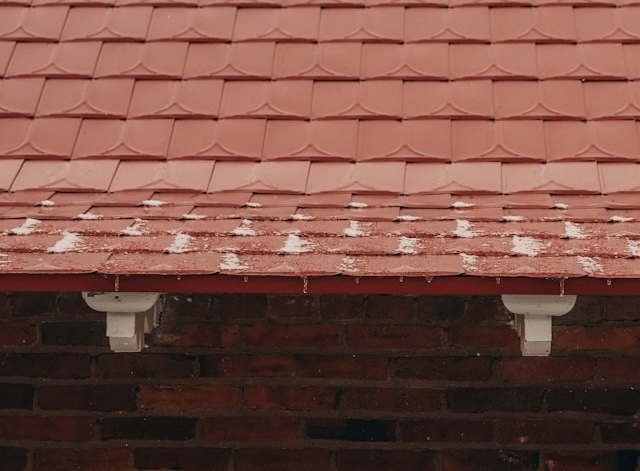Placentia Roofer
Bellflower, Buena Park, Chino, Chino Hills, Coto de Caza, Santa Ana Roofing
Costa Mesa, Cypress, Downey, Fullerton, Garden Grove, La Habra Heights, La Mirada, Lakewood Roofing
Long Beach, Los Alamitos, Newport Beach, Orange, Palos Verdes, Tustin, Villa Park Roofing
Villa Park, Laguna Beach, Yorba Linda, Newport Beach, North Tustin, Laguna Niguel
Irvine, Laguna Hills, Ladera Ranch, Dana Point, Rossmoor, Rancho Santa Margarita, Cerritos Roofing
Mission Viejo, Aliso Viejo, San Juan Capistrano, West Garden Grove, La Palma, Cypress
Huntington Beach, Fountain Valley, Lake Forest, Brea, Seal Beach, Westminister, San Clemente, Corona Roofing
Placentia, Bellflower, Anaheim, Fullerton, Garden Gove Roofing
Yorba Linda Roofing
Quality Orange County Roofing, Villa Park roofing, Anaheim Hills roofing
Is Your Roof Ready for Winter? Free Inspection Tips from Scurrah’s Roofing in Yorba Linda
September 22, 2025Winter in Southern California may not bring freezing snow or ice dams in many areas, but it does bring heavier rain, wind, and moisture that can expose weaknesses in your roof system. For homeowners in Yorba Linda, Orange County, Riverside County, and southern Los Angeles County, taking proactive steps now can save you from costly repairs, leaks, and damage later. At Scurrah’s Roofing, we believe that smart decisions begin with a solid inspection and preparation plan.

Below is our expert guide—with practical inspection tips, a seasonal maintenance table, and professional insights—to help you determine whether your roof is ready for winter weather.
Why Winter Readiness Matters in Southern California
Unlike regions with deep snow, roofs in Southern California face different challenges:
- Heavy rainfall and storms can stress flashing, gutters, and seams.
- Wind, debris, and moisture intrusion may loosen shingles or degrade seals.
- Attic condensation and poor ventilation can cause mold, mildew, or structural damage.
- Deferred maintenance often leads to hidden problems that worsen under prolonged exposure.
So, even though winters here are milder than in colder climates, your roof must withstand above-average rain events, gusts, and moisture stress. A well‑performed inspection now can detect weak spots before they become emergencies mid‑season.
When and How to Perform Your “Free Inspection”
By “free inspection,” we mean a homeowner-conducted, non-invasive review of the roof’s visible condition. This is not a substitute for a professional inspection, but it helps you spot obvious issues you can often fix (or alert your roofer to) before winter rains arrive.
Best Time
- Late fall (October–November), before the first major rains.
- After storms or high winds to spot newly caused damage.
Safety First
- Use a sturdy ladder and never climb on a wet roof.
- Use proper fall protection if you go up there.
- Wear slip-resistant shoes and avoid inspections during rain or high winds.
Inspection Zones & Checklist
Divide your inspection into zones: exterior roof surface, roof penetrations & flashing, gutters & valleys, interior (attic/ceiling), and surrounding vegetation.
Here’s a checklist of common items to inspect:
| Zone | What to Look For | What It Could Indicate / Action Needed |
|---|---|---|
| Roof Surface / Shingles | Missing, cracked, curling, or blistered shingles | Replace or repair damaged shingles immediately |
| Granule loss (evidenced by sand in gutters) | Aging shingles losing protective granules | |
| Flashing & Seals | Loose, cracked, or missing flashing around chimneys, vents, skylights | Reseal or replace flashing to prevent leaks |
| Gaps or separations in seals around skylights, vents | Apply waterproof sealant or caulk as needed | |
| Roof Valleys / Seams | Debris, buildup or damage in valleys where roof planes meet | Clean debris, repair valley membranes or shingles |
| Gutters & Downspouts | Clogs, standing water, sagging sections, detached pipes | Clean, resecure, and ensure proper drainage direction |
| Attic / Interior | Water stains, mold, sagging decking or insulation issues | May indicate hidden leaks or ventilation / moisture problems |
| Condensation, musty smells, daytime light penetrating | Gaps in underlayment or missing insulation may need sealing | |
| Surrounding Trees / Branches | Overhanging branches, loose limbs, dropped debris | Prune back to reduce falling damage and debris buildup |
Use binoculars or a drone for a safer distant view of high or steep roof areas. If you spot any red flags, schedule a professional inspection from Scurrah’s Roofing as soon as possible.
Six Expert Tips from Scurrah’s Roofing to Winter‑Proof Your Roof
Here are some advanced tips and tricks we apply in our professional inspections and recommend to homeowners:
- Double‑check flashings and seaming Flashing is the roof’s weakest link—around chimneys, plumbing vents, skylights, and wall intersections. We carefully examine whether flashing is pulling free, rusted, or cracked, and re‑seal or replace as needed. Even a small gap can allow persistent leakage during rainstorms.
- Clean out and inspect roof valleys Valleys—where two roof slopes meet—are natural channels for water flow. Debris, leaf litter, or damage in the valley can cause water to pool or funnel under shingles. Clearing these and ensuring sound underlayment is essential.
- Ensure gutter and downspout integrity Gutters must be clean, properly sloped, and securely attached. If water backs up, it can seep under fascia, damage fascia boards, or seep into the walls. We also check that downspouts carry water well away from the home’s foundation.
- Check attic ventilation and insulation Inadequate ventilation leads to heat buildup or humidity in the attic, which accelerates wear and tear on roofing materials, and may promote mold. At the same time, insulation gaps or leaks from above should be sealed to reduce condensation.
- Replace missing or severely damaged shingles When we see shingles that are cracked, uplifted, or missing, we replace them proactively. It is safer and more cost-effective to fix these now rather than deal with interior damage later.
- Trim overhanging branches and clear debris Trees are a hidden roof hazard. We remove branches that hang over the house, especially those that can rub, break, or drop leaves onto the roof. Debris, leaves, and twigs trap moisture and accelerate shingle deterioration.
How to Know When to Call the Professionals
Your free inspection can catch many visible issues, but it should trigger a professional inspection or service when you observe:
- Active leaks or water penetrating the interior.
- Widespread shingle damage beyond your ability to patch.
- Warped roof decking or structural sagging.
- Complex flashing failures or large damaged roof sections.
- Gutter or drainage designs that require re-engineering.
- Insurance claims or major repairs needed across the roof.
A professional inspection by Scurrah’s Roofing will include a full, hands-on review of underlayment, flashing, fasteners, vent systems, and structural integrity.
Sample Seasonal Maintenance Table
Below is a seasonal maintenance breakdown tailored for Southern California’s climate. Use it as a reference to keep your roof in prime condition year-round:
| Season | Maintenance Focus | Key Tasks / Goals |
|---|---|---|
| Fall / Pre‑Winter | Prep for rain and wind stress | Clean gutters and valleys, inspect flashings, replace damaged shingles, prune nearby trees |
| Winter / Rain Season | Monitor performance & fix leaks fast | Watch for leaks or dripping, check internal ceilings, inspect after storms |
| Late Winter / Early Spring | Assess post‑storm damage | After heavy rains, inspect for new damage, repair seams, flush debris |
| Summer / Dry Season | Heat stress & UV prevention | Check ventilation and insulation, clean roof of debris, repair weathered seals |
Stick to this schedule annually to catch issues early and extend your roof’s life.
What You Can Do Today (Checklist)
Here’s a quick 10‑step “homeowner action plan” you can run through today:
- Walk around your home’s perimeter and visually inspect the roof with binoculars.
- Check gutters and downspouts for debris and flow.
- Inspect exposed flashing around vents, chimneys, skylights.
- Look inside your attic (if safe) for water stains, mold, or daylight.
- Remove any leaf or branch buildup on lower roof surfaces.
- Trim branches overhanging the roof.
- Photograph any concerning areas to show a roofer later.
- Mark urgent issues (active leaks, missing shingles) for prompt repair.
- Call Scurrah’s Roofing for a professional inspection of problem spots.
- Plan a semi‑annual inspection schedule (e.g., fall and spring).
By doing these steps, you reduce your risk of surprises during rainstorms and get a head start on protecting your home.
Why Partner with Scurrah’s Roofing for Your Winter Preparation
Here’s how Scurrah’s Roofing differentiates itself when preparing your roof for winter:
- Local expertise: We serve Yorba Linda, Orange County, southern Los Angeles County, and Riverside County—so we know the regional climate challenges.
- Comprehensive services: Beyond inspections, we offer repairs, full roof replacement, re‑sealing of vents, painting, gutter & valley cleaning, and ridge repairs.
- Transparent decision support: We help you “make the best decision for you” by explaining trade‑offs between short-term fixes and long-term solutions.
- Upfront cost analysis: We provide cost estimates and suggest whether repairs are more cost-effective than replacement in the near term.
- Quality workmanship and materials: We use trusted materials and best practices in sealing, flashing, and structural integrity.
By combining your proactive inspection with our professional follow-up, you maximize the odds your roof will weather the winter months without damage or emergency repairs.





